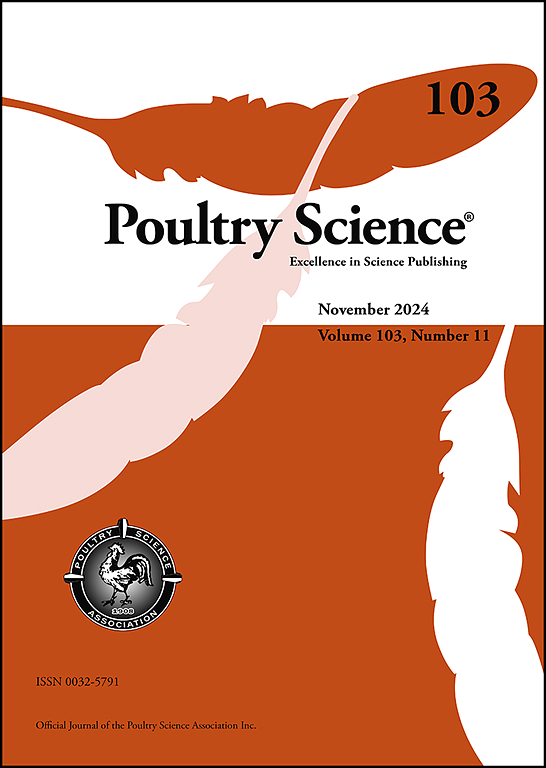Multi-mycotoxin occurrence and their risk to poultry health in semi-intensive broiler farms in Kenya
IF 3.8
1区 农林科学
Q1 AGRICULTURE, DAIRY & ANIMAL SCIENCE
引用次数: 0
Abstract
Scarcity of feed ingredients, unregulated feed mills, and limited monitoring of mycotoxin levels in feed increase the risk of mycotoxin exposure for poultry in sub-Saharan Africa. This study examined mycotoxins in feed from 122 Kenyan broiler farms and an association between on-farm feed handling practices and mycotoxin levels. Using a validated multi-mycotoxin liquid chromatography-tandem mass spectrometry method (LC-MS/MS), all feed samples contained at least one mycotoxin and 93 % (n=113) had >3 mycotoxins. The most prevalent EU-regulated mycotoxins detected were fumonisins (93 %; 79.2 – 1285.3 μg/kg), deoxynivalenol (88 %; 96.6 – 2131.2 μg/kg), aflatoxins (34 %; 4.6 – 87.8 μg/kg), and ochratoxin A (4 %; range 14.90 – 59.20 μg/kg). Deoxynivalenol, fumonisins, and zearalenone frequently co-occurred in the feed samples. Among the surveyed farms, 33 % (n= 40) were at risk of subclinical exposure to deoxynivalenol, while 14 % and 7 % faced similar risks from total aflatoxins and fumonisins, respectively. Univariate analysis found no significant associations between farm-specific feed handling practices and mycotoxin levels in feed. This study found a high co-occurrence of mycotoxin at low to moderate concentrations in compound broiler feed from the selected farms. While these levels pose a potential risk, no direct link to broiler health outcomes was found. Our findings highlight the need for further research to explore the effects of subclinical mycotoxin exposure on broilers and to develop context-specific mycotoxin level guidelines for the region.
求助全文
约1分钟内获得全文
求助全文
来源期刊

Poultry Science
农林科学-奶制品与动物科学
CiteScore
7.60
自引率
15.90%
发文量
0
审稿时长
94 days
期刊介绍:
First self-published in 1921, Poultry Science is an internationally renowned monthly journal, known as the authoritative source for a broad range of poultry information and high-caliber research. The journal plays a pivotal role in the dissemination of preeminent poultry-related knowledge across all disciplines. As of January 2020, Poultry Science will become an Open Access journal with no subscription charges, meaning authors who publish here can make their research immediately, permanently, and freely accessible worldwide while retaining copyright to their work. Papers submitted for publication after October 1, 2019 will be published as Open Access papers.
An international journal, Poultry Science publishes original papers, research notes, symposium papers, and reviews of basic science as applied to poultry. This authoritative source of poultry information is consistently ranked by ISI Impact Factor as one of the top 10 agriculture, dairy and animal science journals to deliver high-caliber research. Currently it is the highest-ranked (by Impact Factor and Eigenfactor) journal dedicated to publishing poultry research. Subject areas include breeding, genetics, education, production, management, environment, health, behavior, welfare, immunology, molecular biology, metabolism, nutrition, physiology, reproduction, processing, and products.
 求助内容:
求助内容: 应助结果提醒方式:
应助结果提醒方式:


